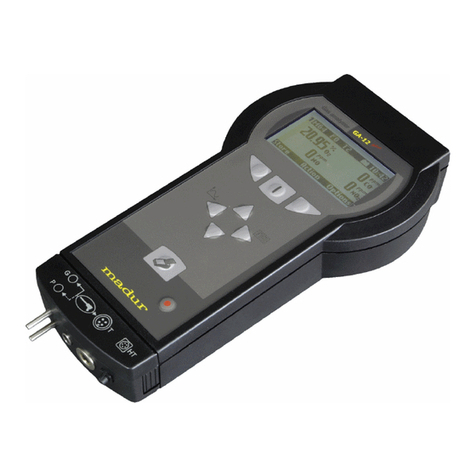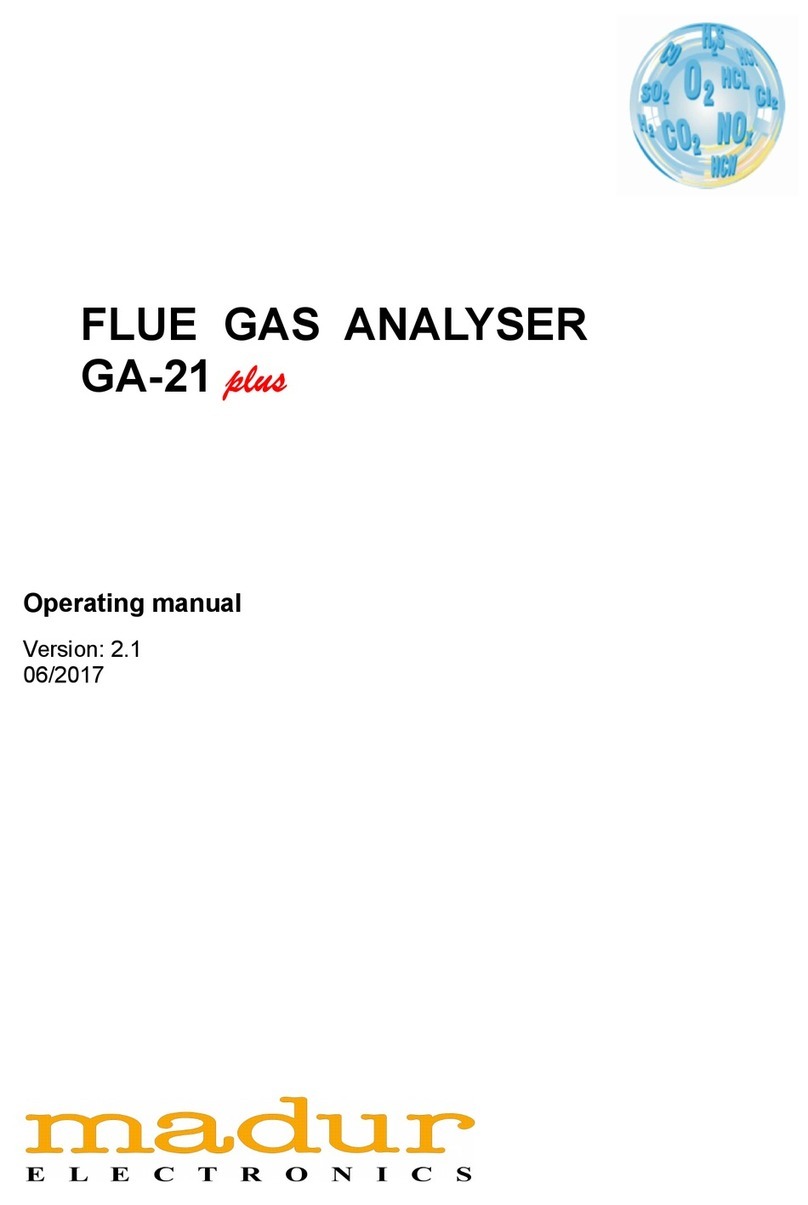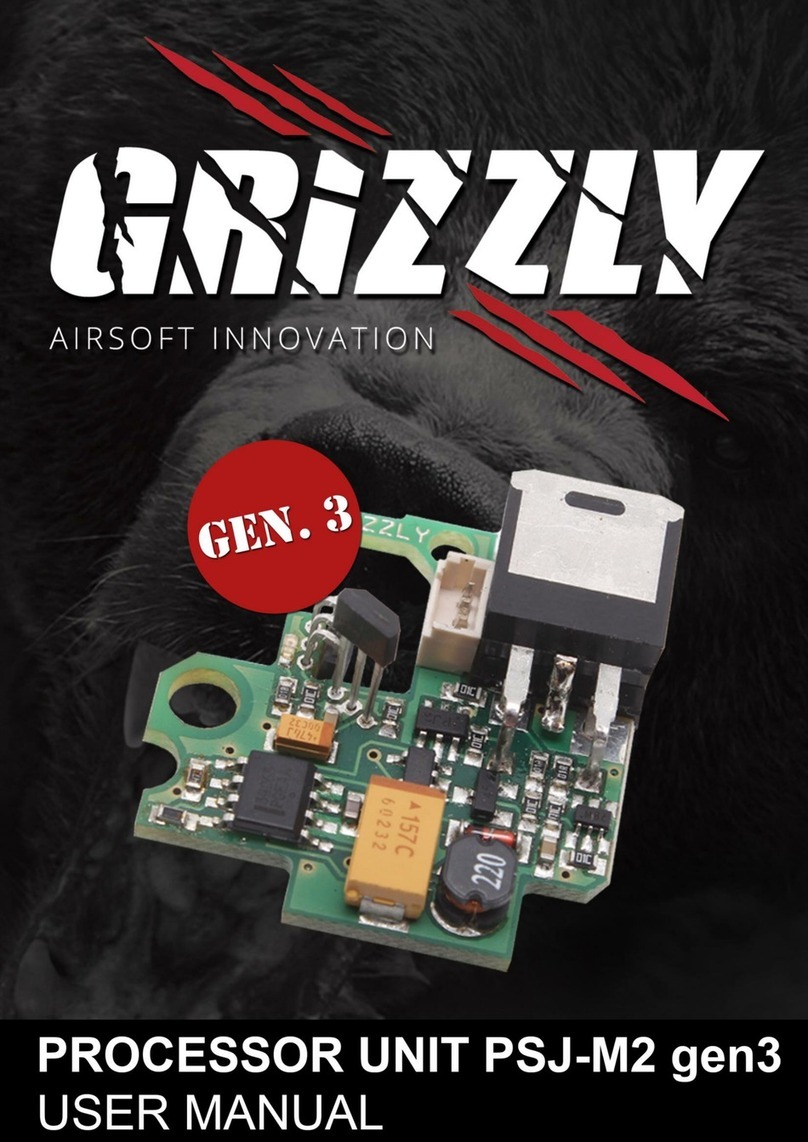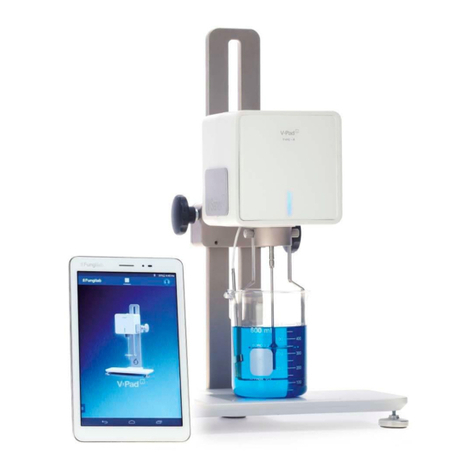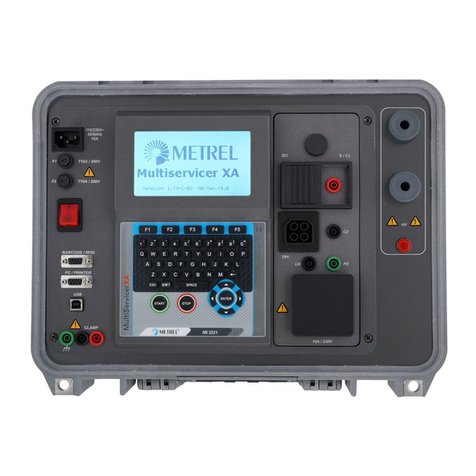Madur Sensonic 4000 User manual

Sensonic 4000 CONTENTS
1 CONTENTS
1 CONTENTS............................................................................................................................................
2 INTRODUCTION...................................................................................................................................
2.1 USE OF THIS OPERATING MANUAL............................................................................................
2.2 SYMBOLS USED..............................................................................................................................
3 MAINTENANCE....................................................................................................................................
3.1 Gas sensors.......................................................................................................................................
3.2 Gas sys em........................................................................................................................................
3.3 Ba ery..............................................................................................................................................
3.4 Service in ervals................................................................................................................................
3.5 Errors during opera ion....................................................................................................................
3.6 Swi ching off af er use.......................................................................................................................
4 GENERAL INFORMATION...................................................................................................................
5 CONSTRUCTION..................................................................................................................................
5.1 Elemen s of gas circui ......................................................................................................................
5.1.1 Gas probe wi h in-line fil er.........................................................................................................
5.1.2 Gas pump.....................................................................................................................................
5.1.3 Gas chamber................................................................................................................................
5.2 Measuremen sys em.........................................................................................................................
5.2.1 Gas sensors..................................................................................................................................
5.2.2 Ambien air empera ure sensor...................................................................................................
5.2.3 Flue gas empera ure sensor........................................................................................................
5.2.4 Gas chamber empera ure sensor................................................................................................
5.2.5 Differen ial pressure sensor.......................................................................................................
5.2.6 Analogue inpu s.........................................................................................................................
5.3 Da a inpu /ou pu sys ems...............................................................................................................
5.3.1 Keyboard...................................................................................................................................
5.3.2 Display.......................................................................................................................................
5.3.3 Prin er........................................................................................................................................
5.3.4 In erface RS 232C......................................................................................................................
5.4 Power supply..................................................................................................................................
6 OPERATION........................................................................................................................................
6.1 USE OF THE KEYBOARD.............................................................................................................
6.1.1 Descrip ion of he keys...............................................................................................................
6.1.2 Selec ing Menu Op ions.............................................................................................................
6.1.3 En ering Numbers......................................................................................................................
6.1.4 Edi ing Tex ................................................................................................................................
6.2 Basic opera ing ins ruc ions...........................................................................................................
6.2.1 Se ing-up he analyser..............................................................................................................
6.2.2 Swi ching on...............................................................................................................................
6.2.3 Swi ching off / S andby..............................................................................................................
6.2.4 Ini ial Calibra ion......................................................................................................................
6.2.5 Measuremen Parame ers..........................................................................................................
6.2.5.1 Fuel 19
6.2.5.2 Average Time.....................................................................................................................
6.2.5.3 Reference Oxygen parame er.............................................................................................
6.2.5.4 Boiler Parame er................................................................................................................
6.2.5.5 Con en of NO in NOx........................................................................................................
6.3 Displaying he measuremen resul s...............................................................................................
6.3.1 Curren Values...........................................................................................................................
6.3.2 Averaged Values.................................................................................................................
6.3.3 The Averaging Process..............................................................................................................
6.4 Pressure/Draf Measuremen s........................................................................................................
6.5 Soo (smoke) Con en s Measuremen ..............................................................................................
6.6 Graphic...........................................................................................................................................
40PLUS_E.DOC/06.97

CONTENTS Sensonic 4000
6.7 Flow measuremen ..........................................................................................................................
6.8 Op ions............................................................................................................................................
6.8.1 Device Info.................................................................................................................................
6.8.2 Sensors.......................................................................................................................................
6.8.2.1 Au o-Calibra ion O2..........................................................................................................
6.8.2.2 Analogue Inpu s.................................................................................................................
6.8.2.2.1 Gas empera ure sensor - TH GAS...........................................................................30
6.8.2.2.2 Ambien empera ure sensor - PT AMB....................................................................30
6.8.2.2.3 Ex ernal hermocouple- - T1 EXT and T2 EXT........................................................30
6.8.2.2.4 Ex ernal resis ance hermome er - T3 EXT and T4 EXT..........................................30
6.8.2.2.5 Ex ernal Vol age/Curren inpu s - U/I1 EXT and U/I2 EXT.....................................30
6.8.2.3 Sensor calibra ion..............................................................................................................
6.8.3 Device Se ings...........................................................................................................................
6.8.3.1 Backligh ............................................................................................................................
6.8.3.2 Con ras ..............................................................................................................................
6.8.3.3 Da e/Time...........................................................................................................................
6.8.3.4 Prin er................................................................................................................................
6.8.3.5 Language Version..............................................................................................................
6.8.3.6 Acous ic Alarm...................................................................................................................
6.8.3.7 Soo Tes .............................................................................................................................
6.8.3.8 S andard.............................................................................................................................
6.8.4 Service.......................................................................................................................................
6.8.4.1 Measured Values................................................................................................................
6.8.4.2 CONTROL LIST.................................................................................................................
6.8.4.3 madur Service.....................................................................................................................
6.9 S oring of Resul s............................................................................................................................
6.9.1 S oring measuremen repor s.....................................................................................................
6.9.1.1 Repor able........................................................................................................................
6.9.1.2 Header (No ice) edi ion......................................................................................................
6.9.1.3 Erasing Repor s..................................................................................................................
6.9.2 Con inuous s oring of resul s.....................................................................................................
6.9.2.1 Banks Table........................................................................................................................
6.9.2.2 Erasing Banks..........................................................................................................
6.10 Da a-Logger...................................................................................................................................
6.11 Prin er.............................................................................................................................................
6.11.1Prin ing he con en s of a screen...............................................................................................
6.11.2Prin ing of all resul s.................................................................................................................
7 BASIC PRINCIPLES OF CALCULATING RESULTS..........................................................................
7.1 Quan i ies ob ained from direc measuremen s (O2, CO, NO, SO2)...............................................
7.2 Calcula ing he concen ra ion of carbon dioxide............................................................................
7.3 Calcula ing he concen ra ion of ni rogen oxides NOx...................................................................
7.4 Concen ra ion of "undilu ed" carbon monoxide COundil...............................................................
7.5 Mass concen ra ions of gas componen s.........................................................................................
7.5.1 Absolu e mass concen ra ion of gas componen s.......................................................................
7.5.2 Mass concen ra ions rela ive o he concen ra ion of oxygen in combus ion gases...................
7.6 Calcula ing combus ion parame ers...............................................................................................
7.7 Fuel parame ers..............................................................................................................................
7.8 The influence of fuel parame ers on he accuracy of resul calcula ions........................................
8 BLOCK DIAGRAM..............................................................................................................................
9 MENU STRUCTURE...........................................................................................................................
9.1 S ruc ure of he main menu.............................................................................................................
9.2 S ruc ure of he menu STORE.........................................................................................................
9.3 S ruc ure of he menu DATA...........................................................................................................
2

Sensonic 4000 INTRODUCTION
2 INTRODUCTION
Congratulations on your purchase of the microprocessor-controlled flue gas analyser
Sensonic 4000
It is a high quality instrument produced using the latest technical discoveries. The Sensonic 4000 is
easy to use. You also have the possibility of using the extra capabilities of this analyser, of
examining measurement results, checking service intervals and many others. Please read the
operating manual carefully. It contains valuable tips and information for problem-free operation.
Regular maintenance will help to keep your analyser ready for use at all times.
2.1 USE OF THIS OPERATING MANUAL
Keep this manual with the analyser Sensonic 4000, and take it with you when carrying out measurements.
Here is a short description of the sections of this manual.
3 MAINTENANCE
This section contains important information designed to keep your analyser working and to save you time
and trouble.
4 GENERAL INFORMATION
This describes the most important characteristics of your new analyser.
CONSTRUCTION
A knowledge of the hardware of the analyser will help you to use the instrument correctly and to avoid
unnecessary down-time.
6 OPERATION
This section explains the use of the analyser with detailed descriptions of the various functions. It is
important to read the sections 6.1 and Błąd: Nie znaleziono źródła odwołania first. The other sections can
be read as and when required.
6.11 BASIC PRINCIPLES OF CALCULATING RESULTS
Here you will find all the necessary theory and formulas used in the calculations carried out by your
analyser
2.2 SYMBOLS USED
MENU
- press the key shown
(5.6.1 Theme) - Further information to this theme is avai ab e in the operating manua
- ATTENTION important information
Information or instructions marked so can be skipped if not immediately needed.

MAINTENANCE Sensonic 4000
3 MAINTENANCE
3.1 Gas sensors
The following points are important for maximising the operational life of the cells and achieving
measurements without errors:
### do not exceed the rated concentration;
### all the gas cells may react unpredictably to the presence of substances which are not usually
found in flue gases. For this reason, the analyser may not be cleaned with chemical solvents. If
organic solvents enter the gas chamber, the cells may become unstable or even suffer
permanent damage;
### some cells require the presence of a bias voltage when not in use. Do not allow the battery to
become fully discharged;
### do not switch the analyser off before the system is purged of remaining flue gas;
### store the analyser in a cool place to reduce the ageing of the cells.
3.2 Gas system
The gas system of the analyser is protected by a double in-line filter. The elements should be changed when
necessary. Check the condensate traps regularly and empty them when needed.
3.3 Battery
The rechargeable battery used in the analyser is maintenance-free. An acoustic warning signal is given when
the voltage drops below 11 V. The Sensonic 4000 will switch off automatically if the voltage drops below
10.5 V. The analyser will operate for about 5 hours from the battery.
Some parts of the analyser draw current even when the device is switched off.
If the analyser is not being used then the battery should be charged fully at
least once a month.
3.4 Service intervals
The parameters of the electrochemical cells change with time, and therefore it is necessary to carry out a
service periodically. This service should include re-calibration of the gas sensors using test gases. The
recommended service interval is 800 operating hours or 6 months, whichever comes first. The analyser is
fitted with an operating hour counter and automatically shows when a service is necessary.
The operating time and the number of hours until the next service are shown in SERVICE/DEVICE INFO.
3. Errors during operation
The analyser checks all circuitry continuously. Should an error become evident, then this is signalled
acoustically and by the message "ERROR" on the screen. The error can be found shown on the screen
OPTIONS/SERVICE/CONTROL LIST.
3.6 Switching off after use
The operating life of the electrochemical cells is dependent on the usage of the instrument. The wear and
tear on the cells is greater when the cell is exposed to the gas for longer or the concentration is higher. The
gas cell is hence "used up" during measurements.
For this reason, the analyser should not be switched off until all the gas tubing has been completely
cleared of flue gases and the gas cells have been purged with fresh air for several minutes.
The Sensonic 4000 will not normally allow the instrument to be switched off if there are still traces of flue
gas in the system. The analyser will continue to operate until the signals from the gas cells are nearly zero.
This activity is shown by the message "VENTILATION REMOVE PROBE FROM FLUE".
4

Sensonic 4000 MAINTENANCE
The [OFF] key must be pressed twice to switch the instrument off completely. Pressing the key once will
put the analyser in the standby mode and the instrument will remain in this mode until it is activated again
by pressing "C" or switched off completely.
Certain conditions, such as strong electro-magnetic fields can cause the
analyser to become "hung-up". The only solution to this problem is to switch
the instrument off. It is, however, possible that the analyser will no longer
react to the keyboard and can not be switched off.
P r e s s i n g t h e [ O F F ] k e y f o r a p e r i o d o f a b o u t
t h r e e s e c o n d s w i l l a l w a y s s w i t c h t h e a n a l y s e r
o f f .

GENERAL INFORMATION Sensonic 4000
4 GENERAL INFORMATION
The Sensonic 4000 is a multi-functional flue gas analyser. Electrochemical sensors are used for the
measurement of gas concentration. The instrument can be fitted with between 2 and 6 of these sensors. All
analysers are fitted with O2and CO sensors, further gas cells must be chosen when the instrument is
ordered.
The following description is based on an analyser containing 3 cells, the third one being an NO sensor.
### Oxygen, O2
### Carbon monoxide CO
### Nitric oxide NO
### Carbon dioxide CO2
### Nitrogen oxides NOx
The first three gases ( O2, CO, NO ) are measured directly using the electrochemical cells. The remaining
components are calculated. The concentrations of oxygen and carbon dioxide are shown in percent. The
concentrations of the remaining gases is shown as follows:
### volume concentration in [ppm]
### absolute mass concentration in [mg/m3]
### mass concentration relative to the oxygen content in [mg/m3]
### mass concentration relative to the energy output in [mg/MJ]
In addition, the air inlet or ambient temperature and flue gas temperature are measured. Using the measured
temperatures, gas concentrations and the known fuel parameters the analyser calculates a variety of
combustion parameters such as Stack Loss - SL, Efficiency - , Excess Air - , Loss through Incomplete
Combustion - IL.
The Sensonic 4000 also measures differential pressure.. This can be used to measure the draught or
pressure in the flue gas channel and, using an appropriate Pitot tube, the flow velocity of the gases. The
instrument is also equipped for the soot test according to Bacharach.
The analyser is also fitted as a 3 channel data logger, capable of measuring a voltage or current channel
together with two temperatures using a variety of thermocouples and thermoresistors.
The instrument can be used at as broad range of ambient temperatures (0 - 50°C). It is fitted with a
rechargeable battery making it independent of the mains power supply.
Hence, the Sensonic 4000 is ideally suited for all those involved in the construction, maintenance and
adjusting of heating systems.
The keyboard of the instrument can be wiped clean if necessary.
The Sensonic 4000 is controlled by a microprocessor. The easy-to-read LCD display, the comprehensive
keyboard and the built-in printer allow the operator to communicate with the instrument easily and to
document the measurements on the spot. The EEPROM memory used in the Sensonic 4000 allows large
quantities of data to be stored without fear of data loss should the instrument be switched off or should the
battery be accidentally run down. The Sensonic 4000 comes complete with programmed data for the 16
most common fuels. A further 10 fuels can be programmed by the operator to cover all eventualities.
The RS232C interface fitted to the Sensonic 4000 allows all stored data to be read for later treatment or the
instrument can be used on-line with the computer.
6

Sensonic 4000 CONSTRUCTION
CONSTRUCTION
Picture (page 50) shows a block diagram of the Sensonic 4000.
Here is a description of the individual components.
.1 Elements of gas circuit
.1.1 Gas probe with in-line filter
The gas probe is used to extract the gases under investigation and to measure their temperature. The gas
probe consists of two parts, the probe pipe with thermocouple (1) and the probe holder (2).
Picture 1 Gas probe with in-line filter
The probe pipe is typically supplies in one of four standard lengths: 150 mm, 300 mm, 750 mm and 1500
mm. As standard a Ni-CrNi thermocouple is used. The probe pipe is fitted with an anchor cone to simplify
fixation in the flue gas channel.
The probe pipe is attached to the probe holder with a threaded connector.
The gas tubing in the Sensonic 4000 is protected from the dust and moisture present in the flue gases by a
filter (4). The filter elements (3) should be changed when dirty to ensure a free flow of gas. The condensate
should be removed from the condensate traps when necessary.
The plug (6) and hose end (5) are connected to the front plate of the analyser.
.1.2 Gas pump
The internal gas pump draws the gas into the Sensonic 4000 and passes it through the gas chambers. The
self-cleaning pump is a high quality item and is known to be extremely reliable.
The gas cells operate best with a flow rate of 90 l/h, which is set at the factory and compensates
automatically for flow restrictions or changes in battery voltage.
.1.3 Gas chamber
The gas chamber is fitted with between two and six gas sensors. Oxygen and carbon monoxide sensors are
fitted as standard equipment. The other cells are chosen when the instrument is ordered. The gas chamber of
the Sensonic 4000 system is characterised by minimal dead capacity, which leads to low inertia of the
analyser indications. In addition to the gas sensors, there is a temperature sensor placed in the chamber for
temperature compensation of the sensors.

CONSTRUCTION Sensonic 4000
.2 Measurement system
.2.1 Gas sensors
The oxygen concentration is measured using an electrochemical cell. The sensor signal is directly
proportional to the oxygen volume concentration. The oxygen sensor needs no calibration with standard
gases - it is fully calibrated during the initial calibration when a point corresponding with the contents of
oxygen in clean air (20.95%) is determined.
The toxic gases are also measured using electrochemical cells
Table 1 presents all the gas sensors available. Any of them can be used in Sensonic 4000 system.
To guarantee long-lasting, trouble-free function of electrochemical sensors the following points are
important:
### the stated maximum measuring range of the sensor should not be exceeded.
### all the gas sensors can react unpredictably to certain chemicals which are not typical for
combustion gas composition. For this reason, i t i s a b s o l u t e l y f o r b i d d e n t o
w a s h t h e p a r t s o f t h e g a s l i n e w i t h c h e m i c a l s o l v e n t s . The
vapours from such solvents can get inside the gas chamber and result in destabilisation or even
permanent damage of the gas sensors.
### the gas sensors are working even when the analyser is switched off - so the battery should never
be disconnected or completely discharged.
### the analyser should not be switched off before all the flue gases have been removed from the
analyser gas circuit.
### the sensor chamber must be kept dry.
### the switched off analyser should be kept in a cool place, which increases the lifetime of the gas
sensors.
.2.2 Ambient air temperature sensor
The ambient temperature is measured by the analyser for use in some of the calculations carried out, such as
Stack Loss. This can be carried out either by the temperature compensation sensor built into the plug of the
probe holder (INT) or the external connector. The temperature sensor is chosen under the suboption
OPTIONS / SENSORS / ANALOGUE INPUTS.
.2.3 Flue gas temperature sensor
Flue gas temperature sensor is situated in the gas probe pipe and plugged into PROBE socket on the front
panel of the analyser. This sensor is a NiCr-Ni thermocouple in the standard probe version. The range of
such a thermocouple is 50-800oC in the standard version (1100°C available optionally). A special gas probe
with PtRh-Pt thermocouple can also be used, with a range up to 1600oC. Proper flue gas temperature
measurement is the most important factor for correct calculation of the chimney loss and other heat
engineering results.
.2.4 Gas chamber temperature sensor
To compensate for temperature drift of the gas cells, the temperature of the gas chamber is constantly
monitored.
8

Sensonic 4000 CONSTRUCTION
.2. Differential pressure sensor
The Sensonic 4000 is fitted with a precise semiconductor differential pressure sensor. Stubs marked +/-
PRESSURE situated on the left side of the front panel are used to measure pressure. Negative pressure in
flue gas channel (chimney draught) can be measured with the one stub only; differential pressure
measurement is possible using both stubs. The measuring range of the pressure sensor is +/-50 hPa.
.2.6 Analogue inputs
The analogue inputs installed can be used to measure voltage or current on one channel, temperature using
thermocouples and temperature using thermistors. The values measured can be viewed on the screen or
stored in the EEPROM memory.
Tables 2 and 3 show the technical data for the analogue inputs.
Parameter U1 I1
Range -10 V ¸10 V -10 mA ¸10 mA
Input resistance 100 k### 100 ###
Resolution 10 mV 10 µA
Tab. 2 Parameters for current and voltage channels
Parameter Thermocouple Thermistor
Range Ni-CrNi: 0 ¸1300 °C
Pt-RhPt: 0 ¸1600 °C
Fe-CuNi: 0 ¸700 °C
Pt 100: 0 ¸200 °C
Pt 500: 0 ¸100 °C
Resolution 1 °C 1 °C
Tab. 3 Parameters for temperature channels

Sensonic 4000 CONSTRUCTION
SOCKET Pin No. Signal Description
1 GND common I1(-), U1(-)*
U/I1 2 I1+ current I1 (+)
3 U1+ voltage U1 (+)
1 T3 EXT + Thermistor 1(+)
TEMP. 1 2 T1 EXT + Thermocouple 1(+)
3 GND common (-)*
* - The negative sides are all connected to ground
Tab. 4 Connections to analogue inputs
.3 Data input/output systems
.3.1 Keyboard
A film keyboard is used in the Sensonic 4000 analyser which is durable, washable and highly resistant to
external agents. The keys are modern membrane keys with perceptible stroke.
Each press of a key is accompanied by an acoustic signal. The keyboard is shown in picture B (page Błąd:
Nie znaleziono źródła odwołania) and consists of the following elements:
PROBE - Socket for the electrical connection of the probe holder
GAS - Connector for the gas hose
PRESSURE +,- - Connectors for the differential pressure sensor
RS 232 C - Socket for the RS232C cable
TEMP. 1 - Socket for the temperature channels 1 & 3
U/I 1 - Socket for the current/voltage channel 1
Function keys - STORE DATA MENU ENTER
Arrow keys -
Printer keys - PRINT PAPER
ON/OFF keys - ON OFF
numerals - 0to 9 . C
.3.2 Display
The Sensonic 4000 has a LCD display with graphic capabilities. To improve the read-out quality, contrast
regulation for the display and backlighting are used. Measurement results, calculation results, diagrams, text
information, menu options and others appear on the display.
.3.3 Printer
The Sensonic 4000 is fitted with an EPSON dot matrix printer capable of printing the data as graphic or in
the form of tables. All the screens seen on the analyser may be printed.

CONSTRUCTION Sensonic 4000
Printing speed is about 2.5 lines per second. The printer uses normal paper, 57 mm wide.
.3.4 Interface RS 232C
The Sensonic 4000 is fitted with a serial RS232C interface. The socket is mounted on the front of the
instrument and marked RS232C. The interface allows the Sensonic 4000 to communicate with a PC and the
software WINFGA is available for carrying out extensive analysis of the stored results.
Picture 3 RS 232 socket
Picture 3 shows the pins of the interface socket seen from the front. Table 5 shows the connections to the
socket.
SOCKET Pin No. Signal DESCRIPTION
1 RTS control
RS 232 2 RxD Receive Data - RS 232C
3 GND ground
4 TXD Transmit Data - RS 232C
Tab. RS232 connections
Picture 4 shows the correct connection between the Sensonic 4000 and a PC.
RxD 4 2 TxD 3 TxD
TxD 3 3 RxD 2 RxD
GND 2 7 GND 5 GND
6 7
20 8
4 4
5 6
RS 232 socket on ana yser RS 232 p ug on the computer
(numbered for the 25 pin p ug of the
IBM computer standard)
RS 232 p ug on the computer
(numbered for the 9 pin p ug of the
IBM computer standard)
Picture 4
.4 Power supply
The Sensonic 4000 can be used with mains power supply or be operated from the internal battery. A soot
test can only be carried out when the mains supply is connected, otherwise the heating in the probe holder
will not function. The mains cable is attached to the socket on the left of the keyboard. Switching the mains
supply on or off when the instrument is in operation is not recommended. The analyser switches
automatically to the internal battery when the mains supply is disconnected. The LED on the front panel
shows which power supply is in use.
### Red - analyser is switched on and supplied from the battery. Mains supply not present.
### Green - analyser switched off and mains supply present. The battery is charging.
12
2 3
1 4

Sensonic 4000 CONSTRUCTION
### Orange - analyser switched on and mains supply present. The battery is charging.
The maintenance-free 12 V battery used has a capacity of 2 Ah. A fully charged battery will power the
instrument for about six hours.
Should the battery voltage drop below 11 V, then this is signalled with three acoustic warnings and blinking
of the LED on the front panel. The message ERROR appears at the top of the screen and the CONTROL
LIST contains the line BATT LOW.
The instrument switches off automatically if the battery voltage drops below 10.5 V.
The battery is charged by connecting the instrument to the mains power supply.
The state of charge can be seen during the initial calibration or read from the screen DEVICE INFO:

OPERATION Sensonic 4000
6 OPERATION
6.1 USE OF THE KEYBOARD
6.1.1 Description of the keys
STORE
- Switches to the STORE menu
DATA
-Switches to the first results screen. From the current results, the use of this key
switches between MEASURE and HOLD.
MENU
-Switches to the MAIN MENU
ENTER
-Confirms entries and switches options
0
to
9
- Alphanumeric keyboard for entering data and for fast movement between MENU
options
.
-Decimal point when entering data. If used when the screen is showing RESULTS, this
key switches the zoom function on or off.
PRINT
- starts a print-out
PAPER
-moves the paper forward one line
ON
-switches the analyser on
OFF
-switches the analyser to stand-by or off
- moves one step backwards in the menu
- moves one step forward in the menu
and
- move the cursor vertically in the menu
6.1.2 Selecting Menu Options
The menu structure is shown at the end of the manual. The various displayed menus are leading the user
through the structure.
The following picture shows an (not existing) screen, which explains the different types of existing lines.
14

Sensonic 4000 OPERATION
PARAMETER
Title line
1 FUEL
Option line
2 STORE
Command line
3 O2R 11 %
Data line
4 FOOTER YES
Switch line
Here is an explanation of the movement between the various menu options:
and
- move the cursor vertically in the menu
- is the cursor () on the left side of the Title line, the key moves one step
backwards in the menu
- is the cursor () on the right side of the Option line or the Title line, the key
leads to the displayed Option .
ENTER - executes the displayed function (starts data storage for example ), in the
Command line
starts or ends the respective edit function (setting the average time for example ) in
the Data line
switches (i.e. YES/NO) in the Switch line
0 to 9 - for fast movement between MENU options
If a displayed line carries a function, then there will be a number ( 1 to 8 ) on the left side of the line. Press
the number of the option you want to select, and the cursor ( beam )will „jump“ to the selected line. If
number 4 is pressed in the above demo screen the beam would move to FOOTER.
6.1.3 Entering Numbers
Numbers are edited as follows:
0to 9 . - digital keys enter corresponding numbers
and - move the cursor within the line
C- erases whole number ( zero on each position )
ENTER - Confirms and ends the entry
6.1.4 Editing Text
Text is edited as follows:

OPERATION Sensonic 4000
- switches the keyboard into either digital or alphabetical mode. When in digital
mode the cursor has a block form on the screen, in the alphabetical mode it has the
shape of an underlining
and - move the cursor within the text line
- erases the whole text line
0to 9 . - the alphanumeric keys enter numbers in digital mode or letters in alphabetical
mode. Each key has a three letter designation. The first press enters the first letter,
the next presses the second and the third letter. Key presses in alphabetical mode
does not move the cursor.
0- (SPACE) prints 0 number in digital and the space character in alphabetical mode.
The space moves all the next characters one position to the right..
C-(DEL) erases the character above cursor position. This moves all the following
characters one position to the left.
ENTER - ends the entering of a text (if only one line is edited - e.g. the name of a fuel) or
moves the cursor down to the next line (if there are several lines in the edited text -
e.g. the report header)
STORE - end the editing of a header or footer - it enables the storage of edited text. If you do
not need to store the contents of header or footer you should leave the screen by
pressing the MENU key.
6.2 Basic operating instructions
6.2.1 Setting-up the analyser
Connect the components of the analyser system
### Attach the hose to the connector GAS. The plug from the probe holder connects to the socket
PROBE.
Ensure that the gas flow from the base of the analyser is free of obstructions.
6.2.2 Switching on
Before use, the condition of the analyser should be checked:
### Check the filter elements. Clean or replace as necessary.
### Check the state of charge of the battery if the analyser is to be operated from the internal
battery. This is carried out by switching on and reading the battery voltage or charge from the
initial screen, or from the screen MENU/OPTIONS/DEVICE INFO.
6.2.3 Switching off / Standby
Pressing the key [OFF] once will switch the analyser to the STANDBY mode.
In STANDBY mode the power consumption is drastically reduced. Amongst others the pump and the
backlight are switched off. Only the sensors remain supplied to be ready to operate immediately after the
instrument is switched on again.
The analyser does not switch to STANDBY mode if [OFF] is pressed in case:
### the key is being pressed during Initial Calibration. In that case the instrument realises the
action, but will switch to STANDBY only after the calibration is finished.
### the key is being pressed while the is still a high gas concentration detected in the gas chamber.
In this case the instrument will automatically switch to FLOODING WITH AMBIENT AIR
mode and switch to den STANDBY later on.
16

Sensonic 4000 OPERATION
The following screen is shown in the STANDBY mode.
STANDBY
m a d u r
TIME: 1h 23min
>OFF< - TURN OFF
>C< - TURN ON
By pressing [OFF] the instrument can be switched off completely. If [C] is pressed the instrument switches
ON again. Is the instrument in STANDBY mode for more than 8,5 hours it switches off automatically. It is
highly recommended to carry out a calibration of the oxygen sensor when re-activating the instrument.
6.2.4 Initial Calibration
After the instrument is switched on it carries out an initial calibration for 2 minutes.
Make sure the probe is not in the stack during the initial
calibration
Initial calibration is of basic importance for measure correctness and it must not be interrupted before it is
finished automatically..
During this time the Oxygen sensor is calibrated to 20.95% at ambient air, and the other sensors (CO,
NO,...) will be zeroed.
m a d u r
Sensonic 4000
CALIBRATION 42 sec
DATE 17.10.96
TIME 13:42.27
BATTERY 12.6 V
6.2. Measurement Parameters
Directly after the calibration is finished the option PARAMETER is displayed for control reasons or in case
changes need to be done. Usually the option is selected as follows:
MENU - selects the MENU screen

OPERATION Sensonic 4000
MENU
1 PARAMETER
2 PRESSURE
3 SOOT TEST
4 GRAPHIC
5 OPTIONS
and - move the cursor to the PARAMETER option
- select the option. The following screen will appear:
PARAMETER
1 SELECT FUEL
2 AVER.TIME : 10 sec
3 O2R <NORM>: 3 %
4 NO in NOx.: 95 %
5 BOILER PAR: YES
NATURAL GAS
CO2max: 15.5 %
6.2. .1 Fuel
This option enables the selection of a fuel ( if necessary), or the programming of a customised fuel.
From PARAMETER you move to the option as follows::
and - move the cursor to FUEL
- choose SELECT FUEL
and - move the cursor to the desired fuel
ENTER - confirm the selection - an asterix (*)will appear on the left side
FUELS
18

Sensonic 4000 OPERATION
------------------------
- LIGHT OIL
- NATURAL GAS
- TOWN GAS
- COKE-OVEN GAS
- LIQUID GAS
- BIO-DIESEL
- EXTRA LIGHT OIL
- HEAVY OIL
- COAL-TAR OIL
- NATURAL GAS/FAN
- TOWN GAS/FAN
- PROPANE WITH FAN
- PROPANE
- BUTANE WITH FAN
- BUTANE
- BIOGAS WITH FAN
- BIOGAS
- MINERAL COAL 31.5
- MINERAL COAL 30.3
- LIGNITE 8.16
- LIGNITE 9.34
- WOOD DRY
Each fuel of this screen is defined through various parameters. To view them proceed as follows:
and - move the cursor to the desired fuel
- displays the fuel parameters , or gives the opportunity to enter fuel data for the
programmable fuels.
- back to option FUEL
The following screen appears. The already defined fuels can only be viewed. For the user definable fuels all
parameters can be programmed.
The variables are as follows:

OPERATION Sensonic 4000
NAME - Name of the fuel
CO2ma - the maximum concentration of CO2(for complete combustion, O2=0 %)
A1, B - factors for Siegert's formula (Sec. 7.7)
ALPHA - fuel specific parameter (Sec. 7.7)
O2R- the reference oxygen
Vatr - volume of the flue gas at perfect combustion of the fuel
Hu - Heating value of the fuel
UNIT - unit in which the fuel is measured
DEFINE FUEL
1 NAME
2 CO2max [%] 15.8
3 A1 0.500
4 B 0.007
5 ALPHA 33
6 O2R [%] 3
7 VAtr [m3/l] 5
8 Hu [m3/l] 7
9 UNIT kg
6.2. .2 Average Time
To select the average time proceed as follows:
and - move the cursor to Average Time
ENTER - select Average Time edition
0to 9- select the time ( 1 to 60 )
ENTER - confirm the number
and - select min or sec
ENTER - confirm the selection
6.2. .3 Reference Oxygen parameter
To select the reference oxygen proceed as follows:
and - move the cursor to O2R
ENTER - switches between a pre-programmed standard value <NORM> and a free
programmable one, called manual value.
0to 9- if “manual” was selected, a number from 1 to 20 can be entered
ENTER - confirms and ends editing
6.2. .4 Boiler Parameter
This option enables the user to have relevant boiler parameters printed on the Protocol printout for exact
documentation.
and - move the cursor to BOILER-PARAMETER
20
Table of contents
Other Madur Measuring Instrument manuals
Popular Measuring Instrument manuals by other brands
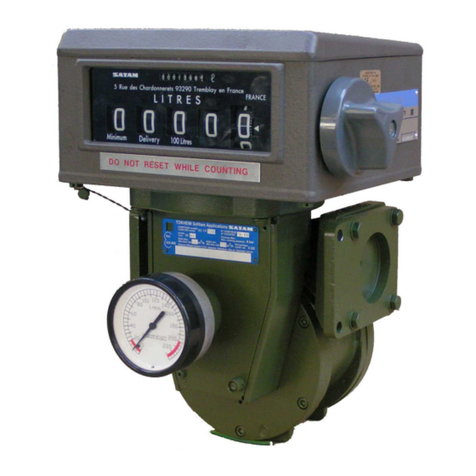
SATAM
SATAM ZC 17 Description, Installation, Operations and Maintenance Manual

Bartington
Bartington Mag-01 Operation manual
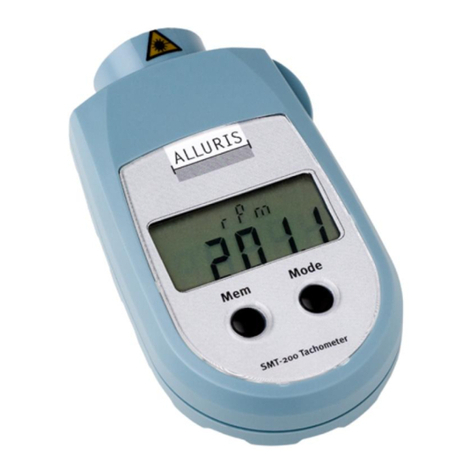
Alluris
Alluris SMT-200C Operation manual
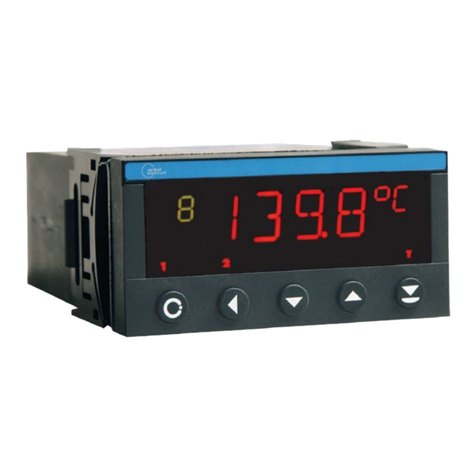
Orbit Merret
Orbit Merret OMM 323UQC quick start guide
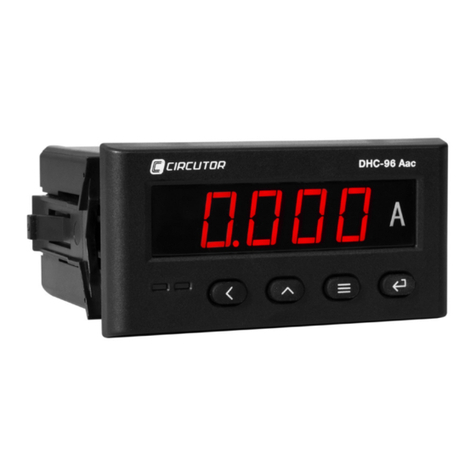
Circutor
Circutor DHC-96 Aac instruction manual
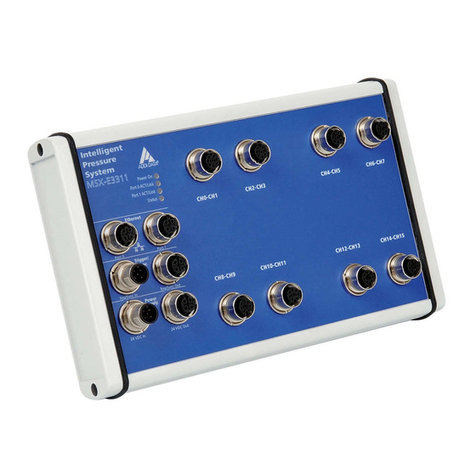
Addi-Data
Addi-Data MSX-E3311 Quick installation
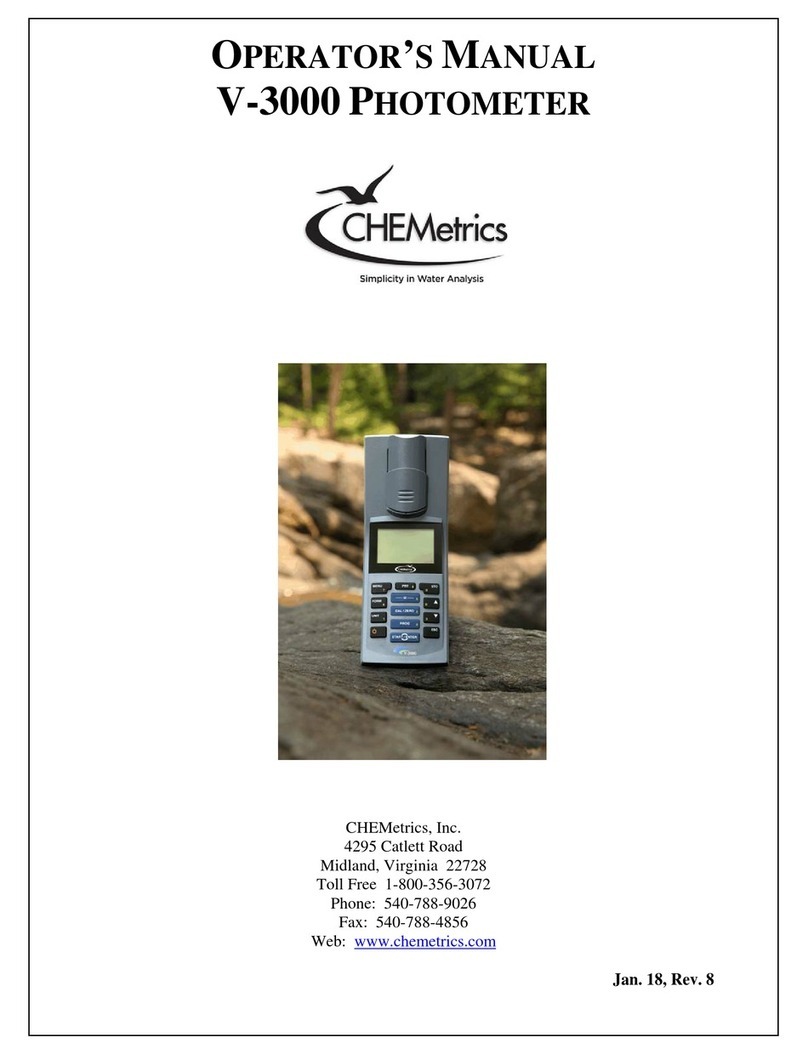
CHEMetrics
CHEMetrics V-3000 Operator's manual
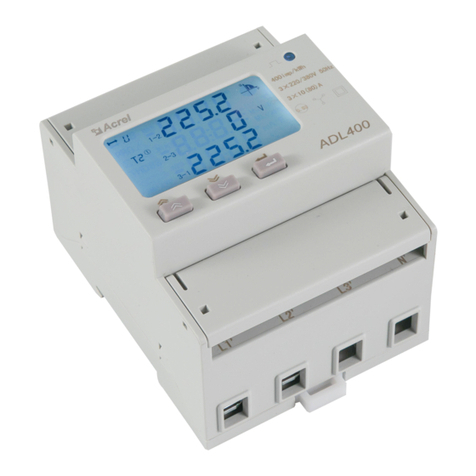
Acrel
Acrel ADL400 Installation and operation instruction
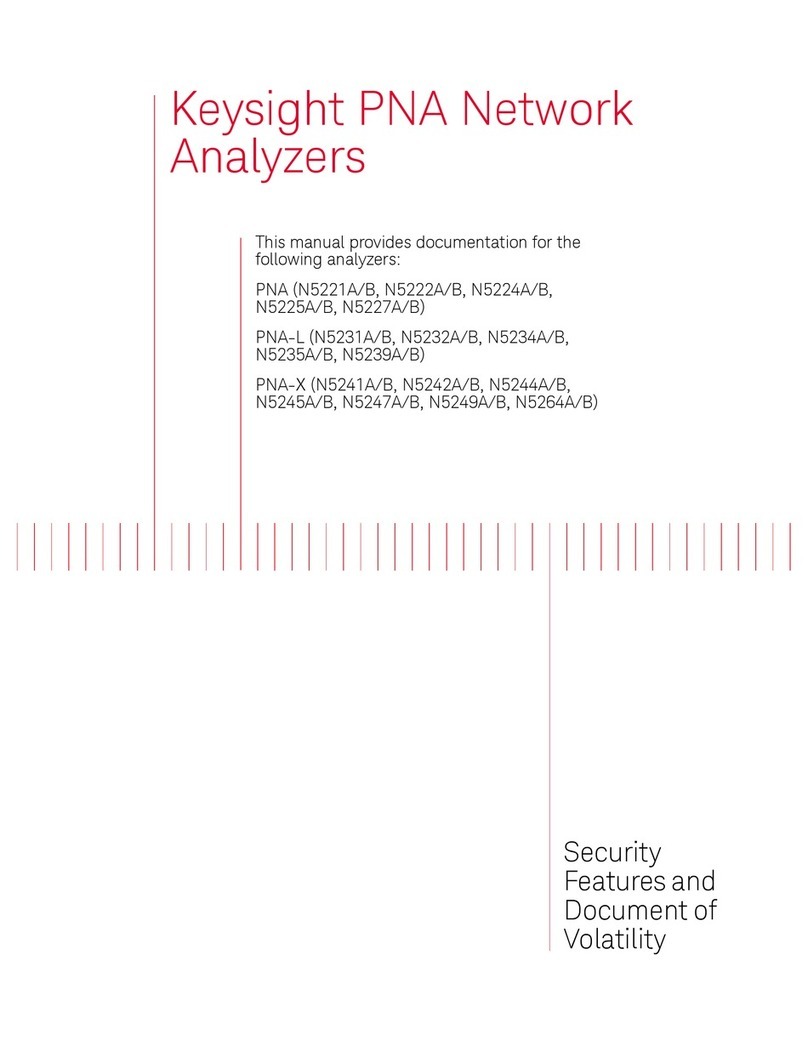
Keysight
Keysight N5221A Security Features and Document of Volatility

PCE Health and Fitness
PCE Health and Fitness PCE-CT 80 user manual
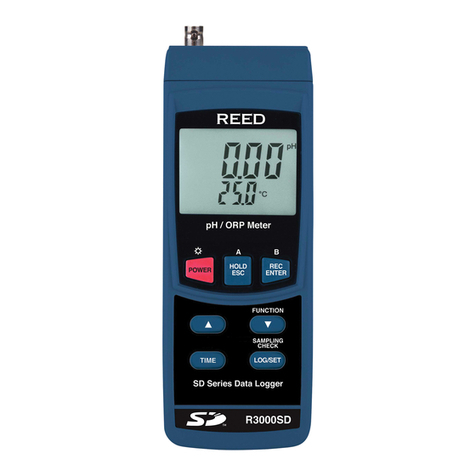
Reed Instruments
Reed Instruments R3000SD instruction manual
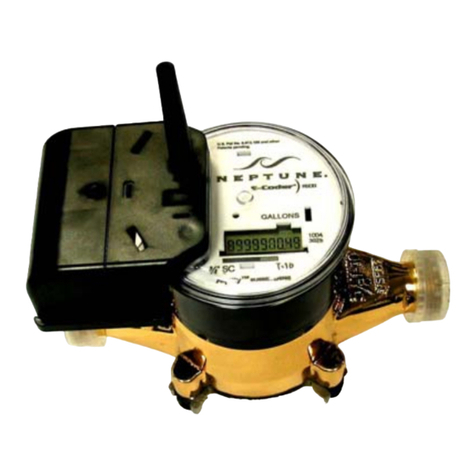
Neptune
Neptune R900 Installation and maintenance guide

